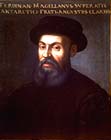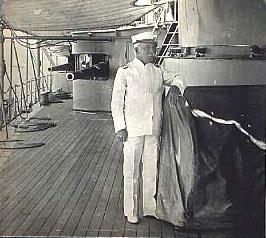History of the Philippines
Beginnings of the Archipelago (1)
Some 50 million years ago, the archipelago was formed by volcanic eruptions. About 30,000 years ago the earliest inhabitants had arrived from the Asian mainland, perhaps over land bridges built during the ice ages. By the tenth century A.D. coastal villagers welcomed Chinese commerce and settlers, followed by Muslim traders from Borneo. The early inhabitants of the Philippines were Mongoloid descent which are predominant today. The gradual spread of Islam from Borneo into the central and northern islands was interrupted by the arrival of the Spanish Christians.
Discovery of the Philippines by the West and Revolution (2)

The Philippines were claimed in the name of Spain in 1521 by Ferdinand Magellan, a Portuguese explorer sailing for Spain, who named the islands after King Philip II of Spain. They were then called Las Felipinas. By the 1830's Spanish culture and thought had penetrated into Filipino culture to the extent that the Filipino people began thinking about liberation from Spain. The government of Spain developed Filipino agriculture to the point that it was self-sufficient.
After some attempts at independence, and an equal number of atrocities on the part of Spain, Filipino Nationalists began to speak out. One of the most famous of the time was Jose Rizal. He studied medicine at the University of Santo Tomas in the Philippines and the University of Madrid. Rizal wrote two important novels that portrayed the abuses of Spanish rule. Although the books were banned, they were smuggled into the Philippines and widely read. On the night of his execution, on December 30, 1896, Rizal proclaimed the Philippines "the Pearl of the Oriental Seas". His death is annually commemorated on December 30.
 Rizal's execution gave impetus to the revolution. Although the Filipino rebels, lead by Emilio Aguinaldo, did not win complete independence, the Spanish were not able to end the rebellion. In December of 1897, negotiations with Spain resulted in the the Pact of Biak-na-Bato. All of the rebels were granted anmisty and the leaders of the revolution returned in voluntary exile to Honk Kong. While in Hong Kong, Aguinaldo and his compatriots designed what is today the Philippine national flag.
Rizal's execution gave impetus to the revolution. Although the Filipino rebels, lead by Emilio Aguinaldo, did not win complete independence, the Spanish were not able to end the rebellion. In December of 1897, negotiations with Spain resulted in the the Pact of Biak-na-Bato. All of the rebels were granted anmisty and the leaders of the revolution returned in voluntary exile to Honk Kong. While in Hong Kong, Aguinaldo and his compatriots designed what is today the Philippine national flag.
The American Era and Independence (2)

At the same time that the Philippines were fighting for independence, Cuba, also a colony of Spain, was trying to liberate itself from Spanish rule. Cuba, however, had the backing of the United States. When the American battleship, USS Maine, sank in the Havana harbor, war between the United States and Spain became imminent.
On April 25, 1898, the United States declared war on Spain and the commander of the U.S. Asiatic Squadron, Commodore George Dewey was sent to engage the Spanish navy in the Philippines. Dewey attacked the Spanish fleet on the morning of May 1, 1898 from his ship USS Olympia. The battle lasted only a few hours resulting in the complete destruction of the Spanish fleet at Manila Bay. The American fleet suffered only minor damage.
The Spanish-American war officially ended with the Treaty of Paris on December 10, 1898. However, the American government was only interested in Cuba's independence, not that of the Philippines. By the Treaty, Cuba gained its independence and Spain ceded the Philippines, Guam and Puerto Rico to the United States for the sum of US$20 million. Given its own history of colonial revolution, American opinion was uncomfortable and divided on the moral principle of owning colonial dependencies. Having acquired the Philippines almost by accident, the United States was not sure what to do with them. On January 20, 1899, President McKinley appointed the First Philippine Commission (Schurman Commission) to make recommendations.
The Treaty of Paris and subsequent actions by the United States were not well received by the Filipinos - who were not even consulted. The Philippine War of Independence began on February 4, 1899 and continued for two years. The United States needed 126,000 soldiers to subdue the Philippines. The war took the lives of 4,234 Americans and 16,000 Filipinos. The Commonwealth of the Philippines was established by the United States government in 1935 with a view to granting Filipino independence within 10 years.
However, on December 8, 1941 ten hours after the attack on Pearl Harbor, the Japanese military invaded the Philippines. United States forces under the command of General Douglas MacArthur withdrew to Java on December 12, 1941. MacArthur promised: "I shall return". General MacArthur kept his promise and returned with a massive amphibious force on the island of Leyte in October of 1944. Over the next four months, U.S. forces, with the help of Filipino guerrillas routed the Japanese army.
After the war, the United Stated restored the pre-war Commonwealth government. By 1946 the Philippines had transformed from a Commonwealth to an independent republic.
End Notes
- http://www.bridgestravel.com/philippines/philippines.htm
- http://www.ualberta.ca/~vmitchel/
 Rizal's execution gave impetus to the revolution. Although the Filipino rebels, lead by Emilio Aguinaldo, did not win complete independence, the Spanish were not able to end the rebellion. In December of 1897, negotiations with Spain resulted in the the Pact of Biak-na-Bato. All of the rebels were granted anmisty and the leaders of the revolution returned in voluntary exile to Honk Kong. While in Hong Kong, Aguinaldo and his compatriots designed what is today the Philippine national flag.
Rizal's execution gave impetus to the revolution. Although the Filipino rebels, lead by Emilio Aguinaldo, did not win complete independence, the Spanish were not able to end the rebellion. In December of 1897, negotiations with Spain resulted in the the Pact of Biak-na-Bato. All of the rebels were granted anmisty and the leaders of the revolution returned in voluntary exile to Honk Kong. While in Hong Kong, Aguinaldo and his compatriots designed what is today the Philippine national flag.

